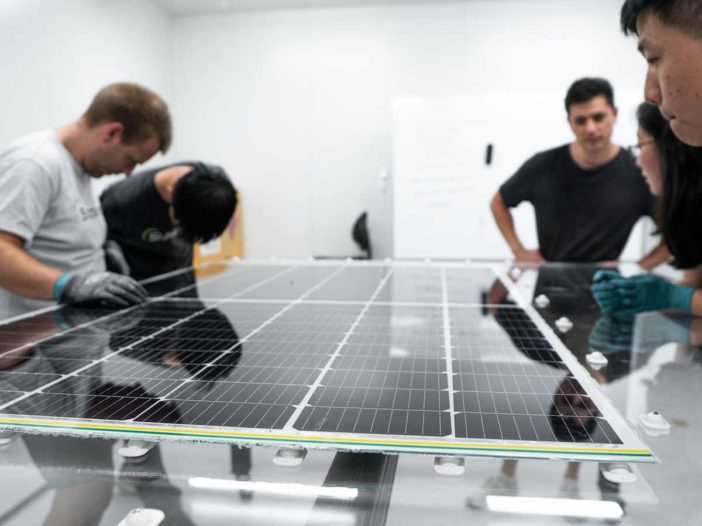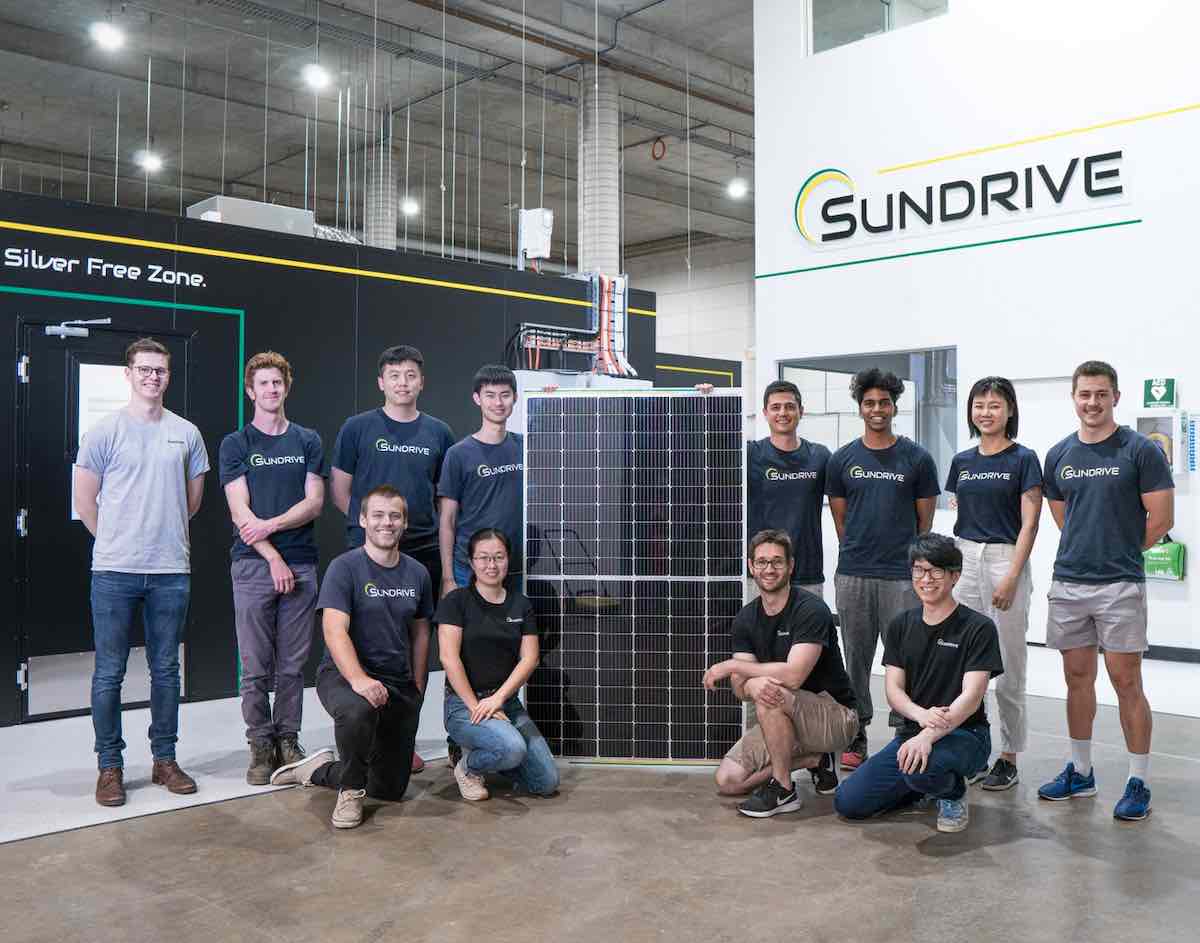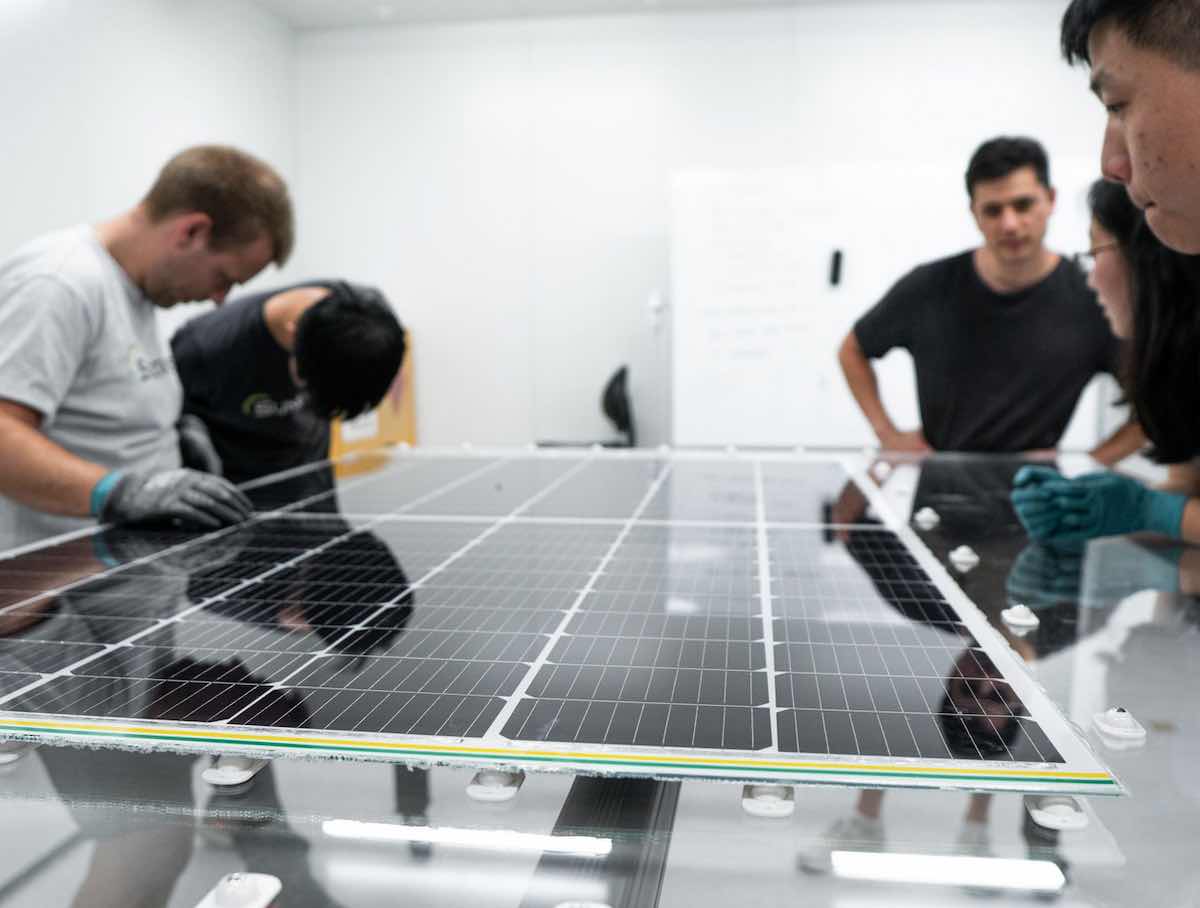
The Australian start up that in September achieved a new benchmark for solar cell efficiency has this week notched up another major new milestone, with the production of its first full-size solar panel.
SunDrive – a company spun out of the University of New South Wales and backed by billionaire Mike Cannon-Brookes and the Australian Renewable Energy Agency – announced the exciting achievement on Wednesday in a low-key LinkedIn post.

It’s a big deal for the Sydney-based company, which in October of 2020 won $9 million in grant funding from ARENA to use its “new breed” of solar cells to produce a commercial-size, Australian made PV module for use on household rooftops.
SunDrive’s technology replaces the growing use of silver in solar cells – a key barrier to the broader adoption of next generation technologies – with copper, which is significantly cheaper and more readily sourced.
The concept was originally developed by SunDrive CEO Vince Allen during his PhD at UNSW. Allen then went on to found SunDrive in 2015 with his flatmate from his undergraduate studies, David Hu.
In September, SunDrive’s technology claimed a world record of 25.54 per cent for commercial-size silicon solar cell efficiency, overtaking the previous record held by China solar giant Longi.
And then just last week, the company revealed on LinkedIn that it was turning its world record cells into modules, ahead of the next step – to perform rigorous testing and cycling to ensure the technology would “outperform and outlast” its competitors.
This week, the result: a high efficiency rooftop solar panel, made in Australia from record breaking Australian technology.
“We have successfully fabricated our first ever full-size solar panel!,” the LinkedIn post said.
“From our process engineers interconnecting every cell to our build team designing the tools to make all this possible, everyone has put in immense effort into making this a reality.
“We are now gearing up to fully automate our technology as we continue to grow our world class team.”

On that front, SunDrive announced earlier this month the appointment of Professor Alison Lennon, also from UNSW, as the company’s chief scientist.
SunDrive said Lennon was joining the team as it prepared to further advance and demonstrate its technology at a production scale, and would bring to the role her “deep expertise” ranging from electrochemistry, energy storage, inkjet/aerosol jet printing and end-of-life module analysis and the circular economy of solar manufacturing.
“Being the supervisor of our co-founder Vince Allen during his PhD, Professor Lennon has not only played an integral role in the very early stages of SunDrive’s technology development, but has also provided key insights and feedback as an advisor since the formation of the company,” SunDrive said.
All told, the company has come a long way from when Allen and Hu set up operations in a Sydney suburban garage in 2015, with the backing of solar industry luminary Zhengrong Shi, the founder of Suntech.
Since then, SunDrive has attracted more deep-pocketed investors, including Cannon Brookes and his wife Annie, through Grok Ventures, as well as Blackbird Ventures.
“Initially we will target the residential market,” Allen told RenewEconomy in September, noting the focus on high efficiency modules, and because the margins are higher.
But SunDrive also has an eye on bigger projects, given the sheer scale of what is needed to turn Australia’s, and the world’s, electricity and energy needs to renewables, and where wind and solar farms on a scale never before seen become a feature of the energy landscape. “That is the plan long term,” he said.
The timing for the arrival of a new Australian made panel on the market – it’s a rather exclusive club of just South Australia’s Tindo Solar and NSW-based MSquare Energy – is good, with the industry this year again reminded of the downsides of being so heavily reliant on imports, mostly from China.
As RenewEconomy has reported, Australia’s solar industry is being buffeted by a string of different PV panel price and supply problems, stemming from global shortages of raw materials such as polysilicon, glass and silver, and exacerbated by soaring shipping costs and, most recently, a power crisis in China.
This has caused manufacturing costs of solar PV modules to surge from $US0.20 per watt peak (Wp) in 2020 to between $US0.26 and $US0.28 per Wp in the second half of 2021 – the highest levels since 2017 – and puts many solar industry players in the unenviable position of deciding whether to reduce their margins, delay projects or increase prices.
Good, independent journalism takes time and money. But small independent media sites like RenewEconomy have been excluded from the millions of dollars being handed out to big media companies from the social media giants. To enable us to continue to hold governments and big business to account on climate and the renewable energy transition, and to help us highlight the extraordinary developments in technology and projects that are taking place, you can make a voluntary donation here to help ensure we can continue to offer the service free of charge and to as wide an audience as possible. Thank you for your support.

Sophie is editor of One Step Off The Grid and editor of its sister site, Renew Economy. Sophie has been writing about clean energy for more than a decade.

